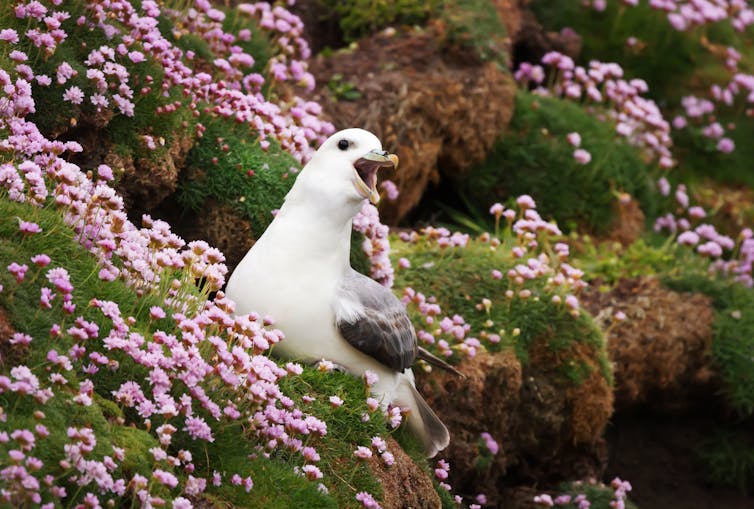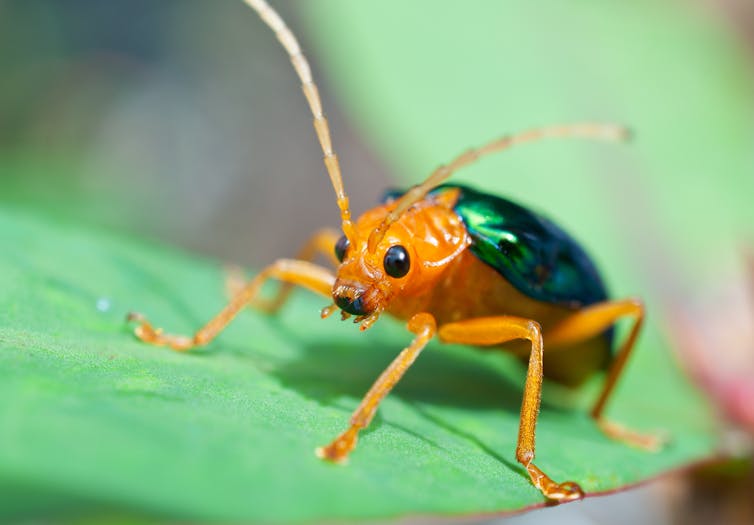In George R.R. Martin’s fantastical land of Westeros in Game of Thrones and House of the Dragon, the spectacle of dragons breathing fire captivates his audience through a blend of myth and fantasy. For me at least, there’s also scientific curiosity.
The images of dragons unleashing torrents of flames on the new series of House of the Dragon got me thinking: if dragons existed, what real-world biological mechanisms and chemical reactions might they use?
But first, a chemistry recap. To ignite and sustain a flame, we need three components; a fuel, an oxidising agent - typically the oxygen in the air - and a heat source to initiate and maintain combustion.
Let’s start with the fuel. Methane could be a candidate. Animals produce it during digestion. The images on the screen of Westeros show dragons are keen on eating sheep. However, our methane-fuelled dragons would need to have a diet and digestive system more like that of a cow to produce enough gas to burn down a city.
There’s also a problem with the storage of sufficient amounts of methane gas. A typical methane cylinder might be rated for 150 atmospheres of pressure, while even a bloated gut can only tolerate a little over one atmosphere. So there’s no biological basis for non-marine animals to store gasses under high pressure.
A better option would be a liquid. Ethanol could be an option. Maybe our dragons hold a vat of fermenting yeast in their guts, or they could have a metabolic system similar to Devil’s Hole pupfish, which live in hot springs in Nevada, US. Under low oxygen conditions, these fish switch to a form of respiration which produces ethanol.
However, storage is once again an issue. Ethanol quickly passes through biological membranes, so keeping it at high concentrations and ready to deploy on the “dracarys” signal (which translates to “dragonfire” in the fictitious language High Valyrian) would require some otherworldly biology.
So, if we are sticking to explanations with at least one foot in real-world biology, then my preferred option is something more oil-based. As anyone who has accidentally set fire to a frying pan knows, this can be a source of roaring flames. There is a biological basis for this in the fulmar gull.
They produce energy-rich stomach oil that they regurgitate to feed their chicks. The oil also serves as a deterrent. When threatened, the fulmar vomits the sticky, stinky oil over predators. Thankfully, the gulls have not yet evolved a way to ignite their vomit.

Feeding the flames
Now that we have a fuel source, let’s turn our attention to the oxidising agent. As with most fires, this will most probably be oxygen. However, it will take more than oxygen in the surrounding air to generate a jet of pressurised flaming oil hot enough to melt an iron throne. And it would have to be well mixed in with the fuel. The better the supply of oxygen, the hotter the flame.
A dragon could draw on some chemistry used by the bombardier beetle. This insect has evolved reservoirs adapted to store hydrogen peroxide (the stuff you might use to bleach your hair). When threatened, the beetle pushes hydrogen peroxide into a vestibule containing enzymes that rapidly decompose the hydrogen peroxide into water and oxygen.
This is an exothermic reaction, which transfers energy to the surroundings, and in this case raises the temperature of the mixture to almost boiling point. The reaction is so aggressive it is sometimes used to propel rockets. The increase in pressure caused by the rapid production of oxygen and the boiling water forces the noxious mixture out of a vent in the beetle’s abdomen and towards its prey or threat.

If employed by a dragon, this reaction has a few nice features. It would create the high pressure needed to drive the jet of oily fuel, the exothermic reaction would heat the oils making them more ready to combust, and most importantly, it would generate oxygen that would drive the combustion reaction.
All the dragon would need is some sort of biological equivalent of a petrol engine carburettor to mix the oil with the oxygen and create an explosive mix. As a bonus, the erupting mixture would probably form a fine mist of oil droplets, like an aerosol, which would ignite all the better.
The spark
Finally, we need a spark to ignite the mix. For this, I’m going to suggest the dragons have evolved an electric organ similar to that found in many fish, particularly electric eels.
These can generate short pulses of up to 600 volts, easily enough to create a spark across a short air gap. If these sparks discharged across the ducts at the back of a dragon’s mouth, they could ignite the high-pressure jet of oil and oxygen.
While we’ll never see a dragon unleashing torrents of flames outside the realm of fiction, it’s intriguing to ponder the science behind fantasy. So, next time you witness a Targaryen’s command of “dracarys,” think about the biology behind that magical inferno.


